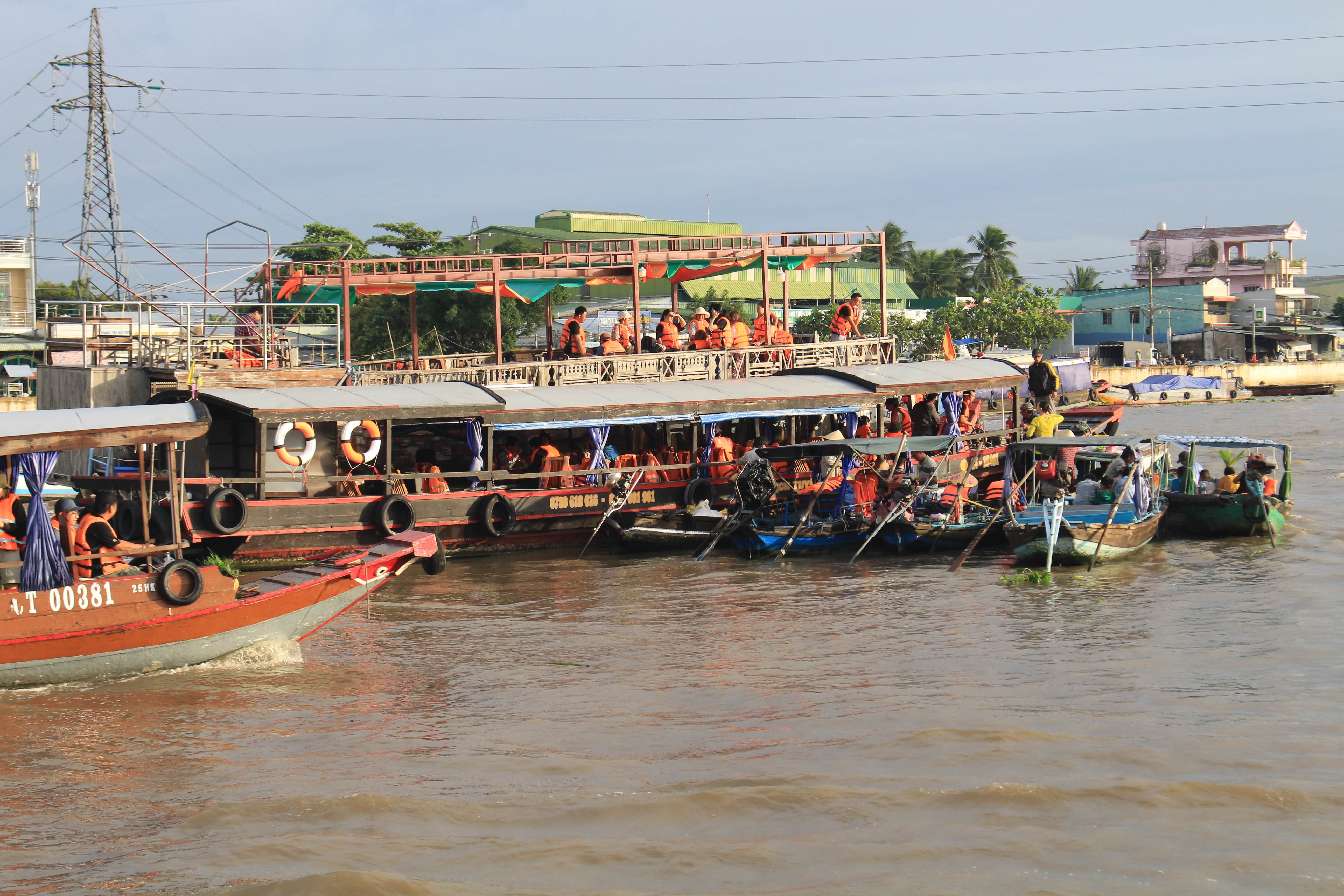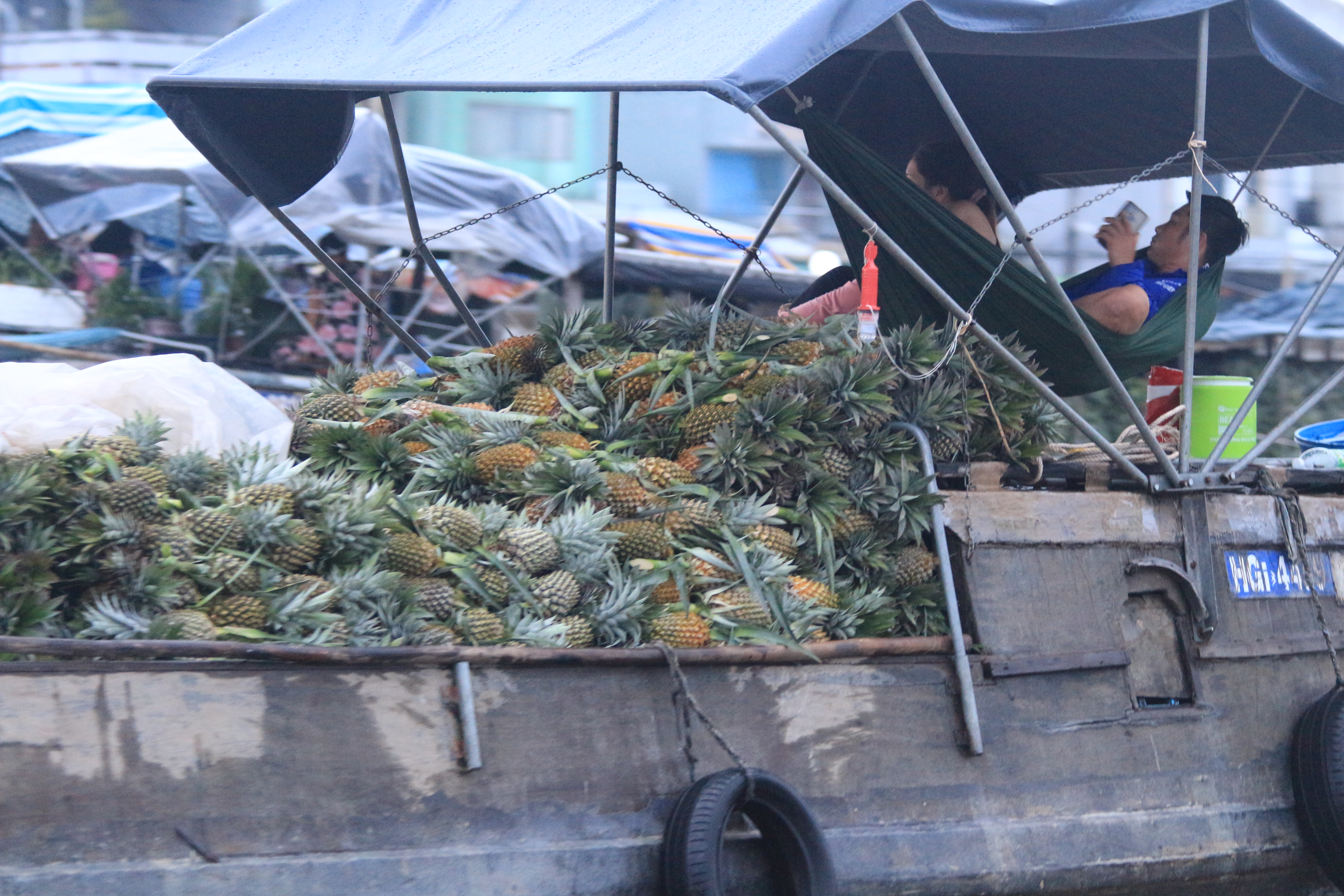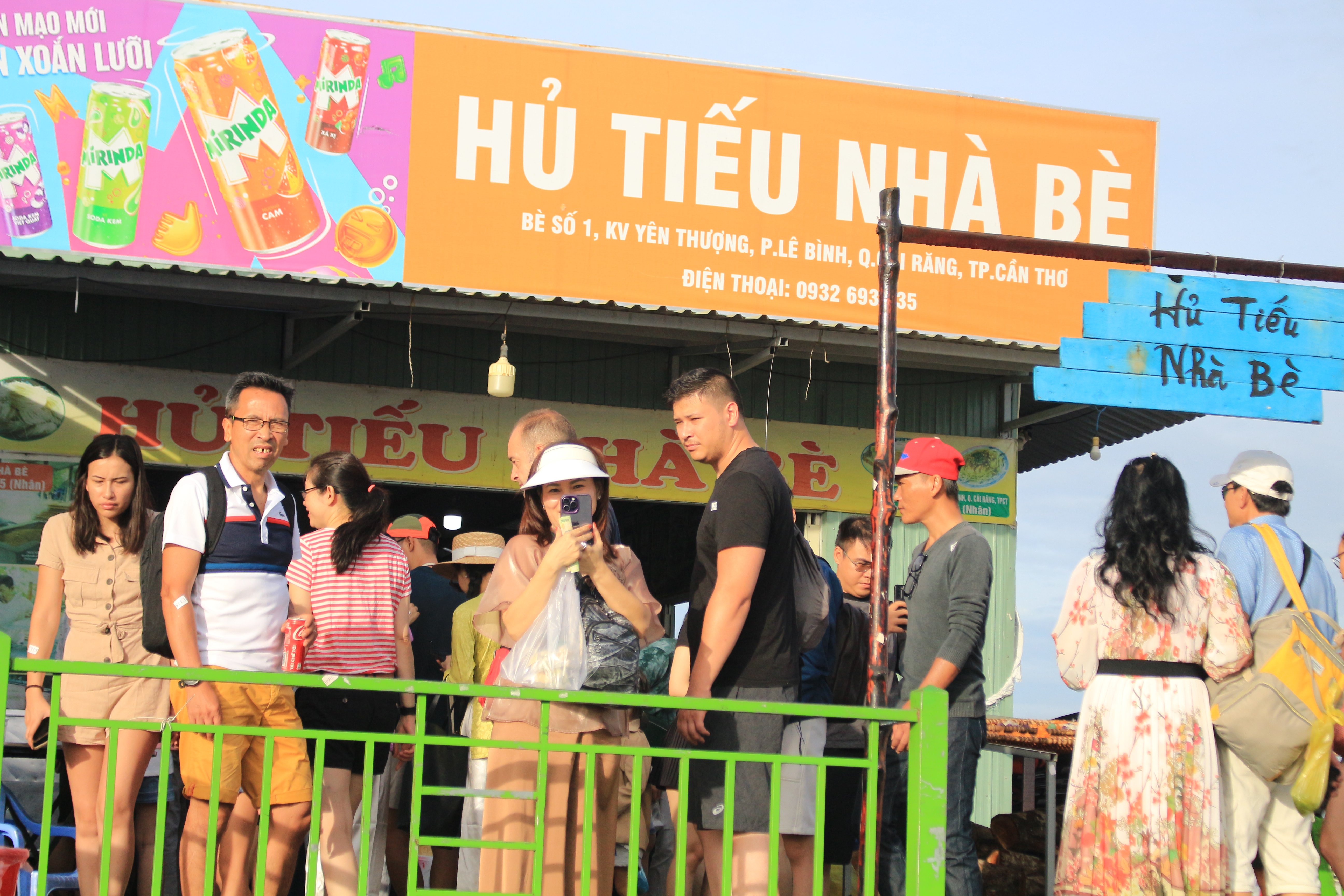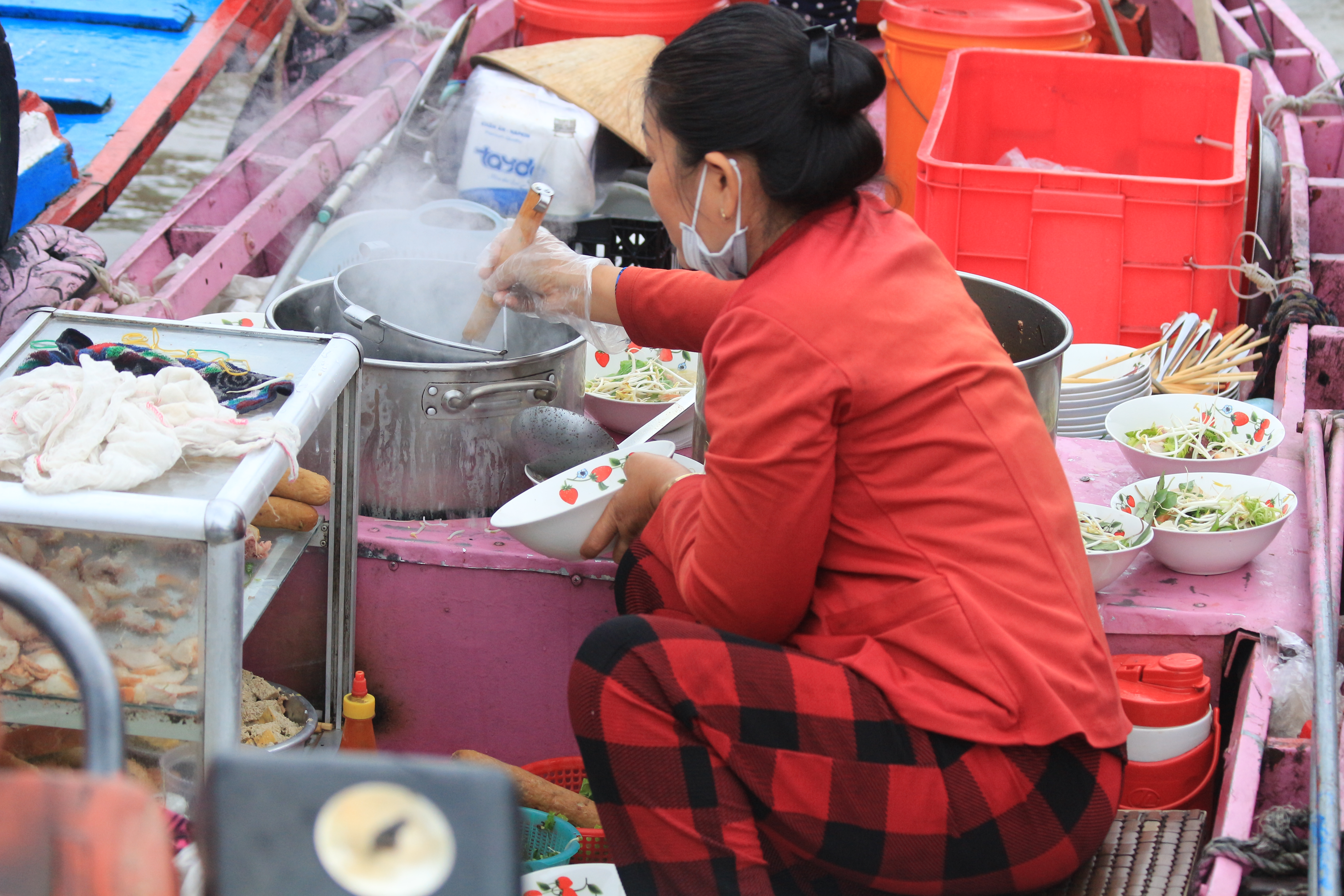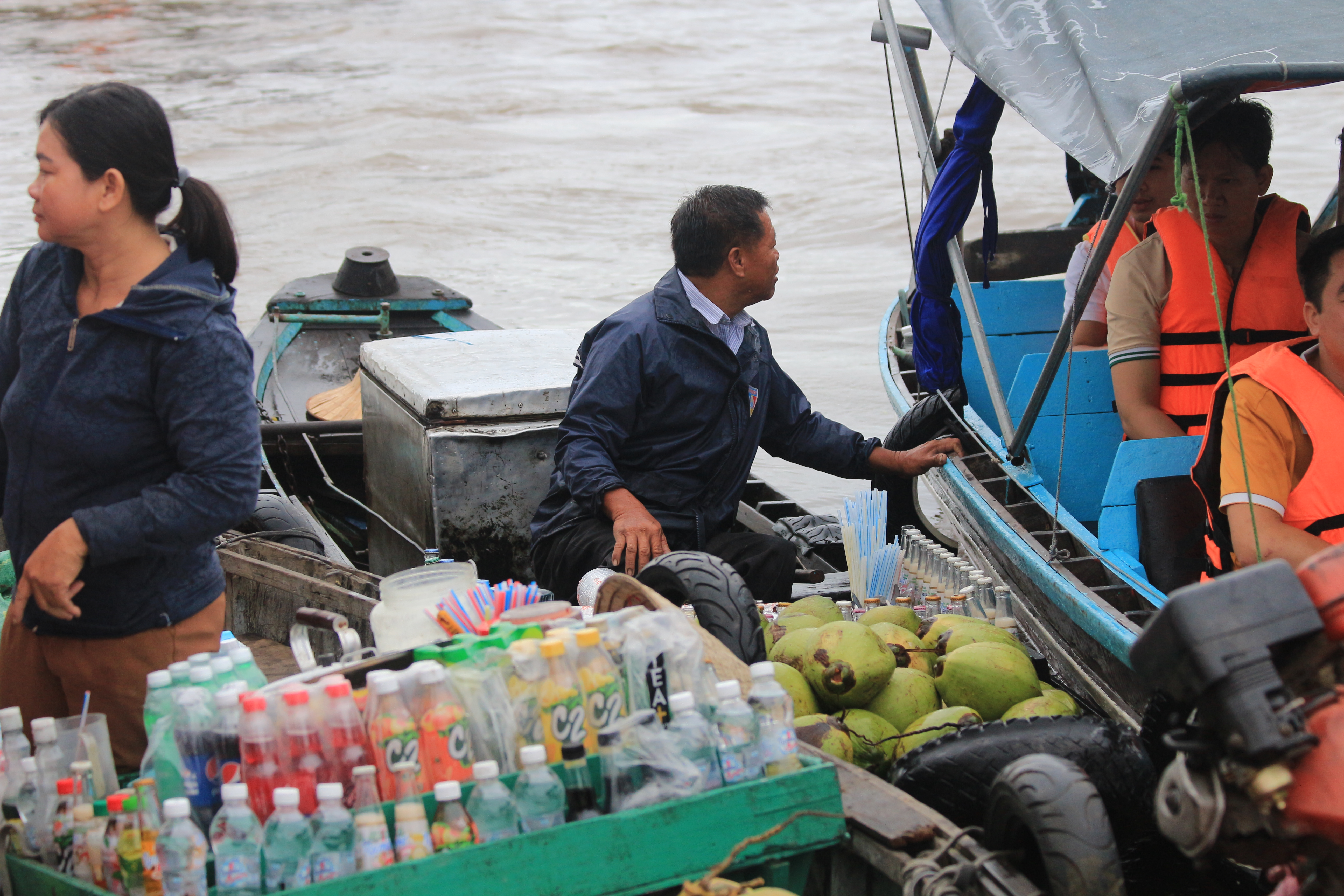The Mekong Delta and its river system constitute the lifeblood of so many throughout Southeast Asia. And those living and working on the river in Vietnam's Can Tho City have, for generations, been dependent on it as a source of income and survival. The Floating Market Tour in Can Tho is a world-famous tourist attraction but have technology and infrastructure signaled the end of this iconic market and tourist destination?
Before I go into detail about the Mekong River in Can Tho, I must first note that it has been ten years since I last took a tour on the river to see the floating market and locals going about their daily lives on the river.
My observations in a recent trip brought back some memories and also raised some concerns with the future of this world-famous attraction.
|
|
| A singer performs for tourists to the Cai Rang Floating Market in Can Tho City, southern Vietnam. Photo: Ray Kuschert / Tuoi Tre News |
The floating market in Can Tho, before tourism, was the lifeblood of the region.
The delta system of rivers meant that it was much easier to transport goods by water than to attempt to navigate the poor quality and dangerous roads of the previous generations.
Indeed, it was the most efficient form of transport of that era and this led to the development of the iconic Cai Rang Floating Market in Can Tho.
I recall, fondly, back in 2012, the river was abuzz with activity at day break.
Buyers and sellers on boats were hustling around in a small part of the river to the west of the center of the city.
As a tourist, I was amazed at the colorless old boats bouncing and jostling in the choppy river currents whilst selling goods to take to the various regional markets, both in Can Tho and to the other towns along the Mekong River system.
The tourism shift
This year, on a weekend tour, I again took the opportunity to hire a private tour and take the trip up the river at sunrise to see the culture that was formed in this region over many generations.
The old colorless boats were still floating on the water, most of them now the homes of the river dwellers with clothes hanging on makeshift lines on top of the boats.
The boats were moored along the river's edge and were just as special to see now as they were a decade ago. There is something very unique about this river system that always seems to catch the awe of visitors.
The Cai Rang Floating Market, however, was a very new experience from that of my previous visit. Gone are the hundreds of boats trading their wholesale fresh products.
Now, just a few transporters remain, carrying such items as pineapple, jackfruit, and coconuts. They were not actively selling but, rather, seemed to be in transit or using the location as a standard transfer point, like a truck depot on a major highway.
|
|
| A boat carries pineapples on the Cai Rang Floating Market in Can Tho City, southern Vietnam. Photo: Ray Kuschert / Tuoi Tre News |
What had appeared, to my surprise, were shops and retail outlets that river tour operators stopped at to allow tourists the opportunity to buy items like dried fish and fresh noodles.
This, to me, seemed out of place because it appeared to be a replacement for the original attraction, the floating market.
|
|
| Tourists visit a shop which is around 10 meters off the riverbank and sells dry fish and noodles while visiting the Cai Rang Floating Market in Can Tho City, southern Vietnam. Photo: Ray Kuschert / Tuoi Tre News |
Our boat stopped in a huddle with other tour boats on the river and we had the opportunity to experience local hu tieu noodles and a coconut juice for breakfast sitting on the chair in the boat.
That was a very different and enjoyable experience, and my assumption is that all the food came from local vendors, allowing visitors to taste the special flavors of Can Tho.
|
|
| A woman serves noodles to tourist to the Cai Rang Floating Market in Can Tho City, southern Vietnam. Photo: Ray Kuschert / Tuoi Tre News |
My meal was rather tasty and not too big, unlike the coconut that took two hands to hold.
Eating the local food on the river was a highlight of the tour.
|
|
| A man asks tourists to buy beverages while visiting the Cai Rang Floating Market in Can Tho City, southern Vietnam. Photo: Ray Kuschert / Tuoi Tre News |
After breakfast and an hour or so visiting the retail outlets set up on the river, we were able to stop off at a variety of different farms and locations along the river's edge.
Other operators took visitors into the small canals to visit farms and other retail outlets. The coconut candy shop and jackfruit farm were just two of the many options that tour operators offered, and it gave time to move your legs a little after sitting in a small boat for almost two hours.
Our tour boat operator was a really friendly young man. Hieu was just 20 years old and was working hard to create a good business for himself on the river.
He told us he had saved up and purchased a used boat for around VND20 million (US$845). He would start his day around 4:00 am and not get home until 10:00 or 11:00 pm.
When not operating tours, he would walk along the shore looking for customers to take on his small boat.
After taking the time to chat to this young man, I realized that the culture of the river had changed so much, but there was still that same dream and struggle, just in a different form.
Missing were the farmers and transporters that would work all day and night to get products from regional farms to the floating market, then off to the many towns and villages, and replacing them are people like Hieu, who are using tourism to eke out a living and create a future for himself on the Mekong River.
I have heard many people say that the Cai Rang Floating Market is dying due to the amazing improvements of infrastructure like roads, highways, and distribution facilities in the region, but maybe it is not dying, it's just changing.
What I observed was people still surviving on old boats on the river. Sellers now focus on selling to tourists fruit, hot food, drinks, and other fresh products available to people lucky enough to travel up the river. Where the wholesale boats once jostled for a position, tourist retail outlets now stand giving both Vietnamese and foreigners the opportunity to buy something local and a little different.
A decade ago, the river tour was only available in the morning as the market had essentially finished by around 9:00 am, but now tours are run all day and into the night to give people many different views of the river.
I arrived in Can Tho knowing that I was going on the floating market tour and not really excited about it. I left there feeling much better than I expected having seen and experienced a new floating tourist market. And I feel excited for its opportunities into the future with new generations of young hardworking people finding their future, and survival, on the river that, for generations, has been the food bowl for Vietnam and the many other countries along its thousands of kilometers of river and canals.
Take the time to jump on a boat and take a tour and you will see a window into the true heart of the Mekong region of southern Vietnam.
Like us on Facebook or follow us on Twitter to get the latest news about Vietnam!



